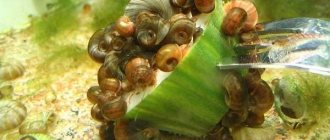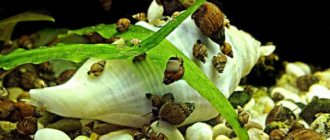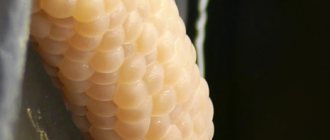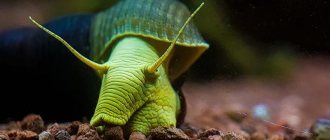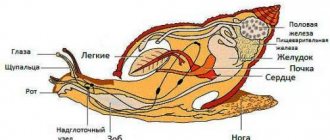Almost any person is ready to admire a small and cute creature that quickly hides in its original shell when it senses danger. Antennae, eyes, soft body - all this arouses interest, especially among children who are ready to play with snails for a long time. But only one or two individuals found on the territory of the dacha is a normal situation. If there are much more of them, you need to start looking for ways to combat shellfish, because they are real pests.
Especially for each reader of DachaDecor.ru, we have done serious work and found the 10 best ways that will help you quickly get rid of pests in your dacha.
Children against snails
Quite an interesting and extraordinary way, but it is children who can collect almost all the snails in the country, just give them this opportunity. They will carefully search every bed and even solitary plants, collecting each new specimen in a jar or bucket. Naturally, it is better not to tell your kids that they are a serious strategic weapon against garden pests, or not to destroy pests in front of them, because this can traumatize the child’s psyche. True, this can be avoided altogether, and after collection, simply take them to the nearest forest belt. These are not cats that find their way home, and therefore, after manual collection and removal, snails will no longer return to their summer cottage!
Reduce the "livestock"
Start by identifying the enemy and finding out the reasons for its accumulation on your territory.
Regarding the first point, if you find it eating young stems of grapes, on cabbage and other vegetable crops, then these are definitely grape snails. If you are not going to set up a snail farm, then we will fight.
The second point is moisture, tall thick grass, many different types of accumulations of humus and compost heaps. You will have to mow and get rid of them - these are the first preventative measures, since it is in them that slugs and snails while away the sunny days, making raids in the rain and at night, when dew begins to collect on the ground.
Reducing the population of both can be left to nature. You just need to help a little by arranging for toads to move to your site, helping lizards and feeding hedgehogs - all these animals are big fans of your slow pests.
By the way, ducks and ducklings are also great hunters of slugs, but which of them will do more damage to the garden is a big question.
Gastropods lay their young underground. Therefore, if while digging you come across a “nest”, destroy it.
You can catch them yourself, early in the morning or after the rain, when the snails have crawled out of ambush - collect them by hand and take them away from your area.
Animals against shellfish
Here everything is a little different, because some animals will look for snails on the site not only for fun, but also for their own food. As in the case of slugs, the fight against which we described on the site not so long ago, hedgehogs and frogs, which eat pests of green beds, can be used against mollusks.
Poultry, or more precisely, ducks, which are very voracious, can also be used as a weapon. They easily swallow every snail that comes their way and quickly clear the dacha of them. But you should not forget that ducks are not very smart birds, and therefore they will not bypass cultivated plants. Ducks, along with helping us, can also cause harm, for example, trampling seedlings or plucking them for their own food. In addition, they will definitely leave behind a serious mark in the form of droppings. Find out what you need to get a good harvest of cucumbers.
Therefore, you should only release ducks into the front garden or garden if you are not growing anything special there.
Prevention methods
The best way to get rid of grape and other snails in the garden is to take preventive measures in a timely manner. First of all you will need:
- regularly remove weeds and mow grass to deprive shellfish of shelter;
- large stones and boards must be removed so that they do not become an abode of pests;
- you will need to drain all problem areas where rainwater accumulates;
- When seedlings are planted, their density must be observed. It is necessary to leave sufficient distance between plants so that shading, which grape snails love, does not form;
- For cabbage and lettuce, you will sometimes need to remove the lower part of the leaves;
- maintain the condition of the soil so that cracks do not form in it where pests can hide;
- When the harvest is harvested, plant leaves should not be left in the garden so that they do not become food and home for mollusks in the fall.
As we can see, there are very different ways to combat garden snails and slugs. You shouldn’t let the situation take its course and underestimate these small pests that can leave a summer resident without a harvest at all.
3.5 / 5 ( 8 votes)
Killing snails with salt
According to the observations of experienced summer residents, it is known that these mollusks do not like salt, and not only do they not like it, but they also cannot survive the effects of salt. This is exactly what you should take advantage of.
In places where snails are collected, where you have seen their maximum concentration, the pests will come out to feed in the evening or at night, which means that this is where everything needs to be generously sprinkled with salt.
If it's a pile of leaves in the garden, rotting weeds in the corner of a summer cottage, or even a compost heap, this method can be used. If you notice a cluster of snails in a garden bed where cultivated plants grow, it is not advisable to use salt, because it can destroy the plants and damage the soil.
What kind of slugs are there, photo
Slugs are gastropods, land mollusks.
There are several varieties of these pests:
- Slugs are oblong mollusks without a shell. Most often they have a grayish-yellow or earthy color. They are the ones who most often attack vegetable gardens and orchards.
- Half-slugs are recognized by their rudimentary shell.
- Snails are horned slugs with a shell. There are many varieties of snails: forest snail, variegated garden snail, common hairy snail, bush snail, and grape snail. They all differ in the color of the body and the shape and coloring of the shell.
Mollusks live for several years: snails - 3-4 years, slugs - 1-2 years. They become most active in the second half of summer. Parasites actively reproduce, laying eggs in dark and damp places. Most often, clutches, and even the slugs themselves, can be found under stones, old stumps, in compost, garbage and manure heaps, under old tree bark, etc.
Slugs and snails are mostly nocturnal and hide in secluded places during the day.
Fighting snails on strawberries
Cute-looking mollusks often spoil our strawberry harvest, and since they feed at night and try to wait out danger in shelters during the day, we need to fight them with more thoughtful means. These could even be plants that will become permanent protection for the strawberries. Even in early spring, when you are just starting spring care of the site, plant mustard, rosemary, thyme or even ordinary parsley around the strawberry bed. You can find out what is needed for a “healthy” garden.
This will create a certain barrier that the snails will not go through!
Even if you notice uninvited guests on the strawberries, you can quickly collect them and take them away from the dacha; these were 100% accidental troublemakers.
Appearance Features
A slug is a land gastropod without a shell, which is related to the snail. Unlike a slug, a snail has a rudimentary shell.
A slug is easily recognized by its shapeless, elongated body with strong muscles, due to which it takes on different shapes. The color is very different - gray, dirty yellow, light brown, etc. The body size in length is about 3 cm.
Heads with two tentacles carrying organs of vision, touch and smell. The grater-shaped tongue is covered with several rows of small, hard teeth. There is a special mantle with a lung on the back, and a breathing hole on the side.
The slug gets its name from the mucus that covers its body. This is an important component of his life - helping to maintain the microclimate of the body, move and protect himself from enemies.
Slugs are land gastropods
We use sawdust, ash, sand and granules
You can fight snails in even simpler ways, the same as with slugs. These pests are very similar to each other, and therefore the measures to deal with them may be identical.
Crawling along a garden bed, plant or any object, the snail secretes mucus, with the help of which simpler movement is created. If you dry out the pest’s body or reduce the secreted mucus as much as possible, this movement will become impossible, and the mollusk simply will not move further, or will not be able to move at all.
Such barriers can be created using dry materials. These can be special purchased granules, which can be found in specialized stores or on the market, or improvised materials - sand, wood ash, small sawdust. You need to make strips, necessarily closed around the perimeter of the beds, only 10-15 cm wide, choosing a convenient material. A snail, crossing the “border,” will not crawl even half of the “obstacle course,” which means it will not even reach your greenery.
Chemicals
Natural methods do not always bring results, especially if the summer is rainy. In this case, you have to use chemicals.
Using the following drugs, you can get rid of slugs and snails:
- Mesurol. These are granules that are scattered abundantly in the habitats of mollusks. Suitable for use even at low temperatures. It turns out that the effect is almost immediate - the snails are deprived of mucus. The drug is used 2-3 times, depending on the complexity of the situation and until the pests are destroyed.
- Nemaslug. The product contains nematodes that penetrate the body of snails, causing their slow death. After about 5 days, the pests stop feeding and die after 10-14 days.
A product is used to spray or water plants. It is enough to carry out 1-3 treatments per season. - Anti-slip gel. The product has no odor. The drug is applied strictly around the plants. A coating is created that provides reliable protection against slug attacks.
When grown indoors, the area around the greenhouse is treated, since pests can penetrate inside through underground tunnels.
The use of chemistry does not leave its mark on the environment. Therefore, it is strictly forbidden to exceed the dosage specified in the instructions.
Sharp materials in the fight against snails
Snails are afraid of drying out their body, but injuring it is generally very scary for pests. Therefore, having sensed a barrier of sharp materials in front of them, pests stop and go in another direction, even if there is a lot of tasty and juicy food ahead.
As such a barrier, you can use nut or eggshells, which are broken to create sharp cuts and chips, as well as broken gravel. You could also use glass, but it is very difficult to remove it from the garden without getting hurt, and therefore we do not recommend this method.
Another material that you can try to create such a barrier is old PVC panels for interior decoration. In the sun they harden and burst, creating sharp chips that are dangerous for shellfish. You can crumble the plastic into smaller pieces and create a border with it.
Funnels in the fight against snails
Special plastic funnels have been on sale for a long time that protect young plants from being eaten by snails. These are small plastic products made of thin material, which is a protection placed in the soil. When the funnel is installed, the pest simply does not have the opportunity to crawl over it, since the sharp angle prevents this. The snail also cannot pass under the funnel, because it digs several centimeters into the soil.
Plants that repel pests
In order not to have to worry about preparing preparations for slugs and not to set traps, you can plant plants around the area whose smell repels pests.
These include onions and garlic, mustard, marjoram, wormwood, thyme, savory and some others. Plan the planting of these plants so that slugs do not have access to vegetable and berry crops.
Thyme
Repelling snails with mustard
They say that mollusks cannot tolerate mustard and do not even crawl near this plant. Gardeners played on this and decided to try an even more drastic way to scare away snails than planting mustard around the beds. The recipe is very simple - infuse 40-50 g of dry mustard in 250-300 ml of water, and after an hour, spray those plants in the garden that are most often attacked by snails.
The aroma of mustard will scare away snails, which will begin to move to other beds, which means you should immediately take care of their protection. You can also use mustard in terms of prevention, so that pests do not approach young plants at all.
Life cycle
Each slug is hermaphrodite - has both female and male genital organs. They recognize each other by smell. They usually lay 30 eggs, 2 mm in diameter, collected in compact piles. After 3 thinnings, young animals appear that are able to feed on organic matter already in the first day of their life. After 6.5 weeks, the pests are ready to mate. Each individual lays up to 500 eggs during the season.
With the onset of cold weather, many individuals die; some remain to overwinter in the soil. In the spring, the life cycle of the creatures repeats.
How to use coffee against snails
It is worth talking about coffee very seriously, since it is not just a method that can destroy mollusks, but also a means of destroying beneficial insects and cultivated plants. If you don’t want to lose everything in the garden, then you should work with coffee very carefully.
No, we cannot say that coffee grounds or caffeine solution are so dangerous, but they have a certain effect on young shoots and leaves, as well as the vital activity of insects useful in the garden. Therefore, if you are already desperate in the fight against snails, you can easily try using coffee, but if not, find another way.
So how do you use coffee? You can take coffee grounds, used ones of course, and use it to create a barrier around those plants that you are most worried about. The difficulty is that coffee grounds are only effective for a few days, and drinking so much coffee to constantly renew the “fences” around plants is harmful. Then you can use a caffeine solution prepared from tablets or instant coffee. Here it is necessary to seriously reduce the concentration so as not to harm plants and insects, to about 0.1%. Next, take this solution and spray. The very next day the snails will not feed on the treated plants.
We can talk for a long time about how to destroy, expel, kill or scare away snails so that they no longer spoil our garden and, naturally, the nervous system. But we decided to suggest you comprehensive measures of influence, which, according to our personal survey among summer residents, took first place. Everything is very simple here, you just need a little time and desire to deal with pests in the garden!
Nematodes
9. If you have a real pest epidemic, try purchasing nematodes at a gardening store. These are worms that parasitize snails; be sure to read the instructions before use. Spread the suspension, spray it around the area, this can be done with a broom.
See also:
Tags: pests, snails and slugs
Tips from summer residents
advise your friends and acquaintances if necessary
- Even when planting plants, in the spring, place pieces of plywood or boards in the corners of the beds, which will create a shelter for snails. Help the clams find their place underneath, for example, by placing stops under the plywood to create some kind of void underneath. Then, after germination, check your traps every week and remove snails from under them, which will sit in place all day long and only crawl out in the evening to feed. Slugs, which are also garden pests, will also gather here;
- Around the same time you plant your plants in the spring, take care to protect your garden as much as possible. Plant protective plants around that will prevent the pest from reaching the green seedlings. This way you will save a significant part of the crop from destruction;
- Routine care of garden beds and flower beds already gives you the opportunity to effectively control pests. Remember how beneficial wood ash is for the soil, and simply sprinkle it on the area. Naturally, not constantly, but periodically, thereby creating difficulties for the movement of pests and enriching the soil with useful substances;
- Approximately once a month, carry out preventive spraying of plants with complex preparations that affect several types of pests at once.
Just a few points, and standard biological protection against snails works. If this does not help, we advise you to resort to the use of special chemicals that will help restore order in the area.
Fighting mollusks at your own dacha is not as difficult as it seems at first glance. This is not a spider mite, which is difficult to remove from the greenhouse, or even the Colorado potato beetle, which is full of potatoes every year. Snails are a serious eater of greenery, but they can be destroyed, especially if you are already prepared for this confrontation.
conclusions
In conclusion, it can be noted that although chemicals do their job, they remain chemicals, substances foreign to the soil and the beneficial bacteria inhabiting it. There is no need to think that the poisons themselves will do all the work, and you will only reap the harvest. Even if this is so, how useful will the fruits be and will they be at all?
Simple recommendations for traps and barriers will not only help prevent slug infestations, but will also make the soil more fertile. And remember one wise thought, which goes back far to our ancestors: “Bowing to the earth is not alien, it will thank you a hundredfold!”

